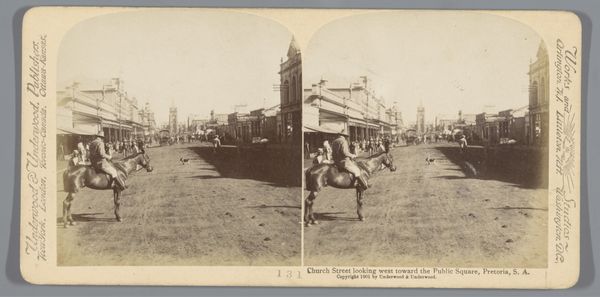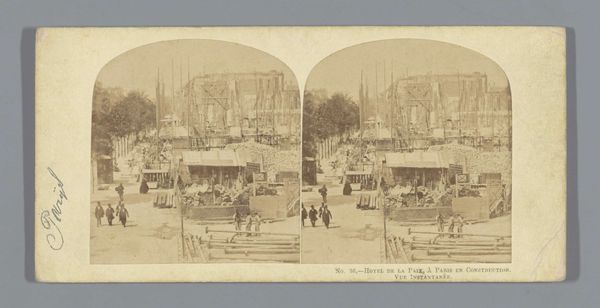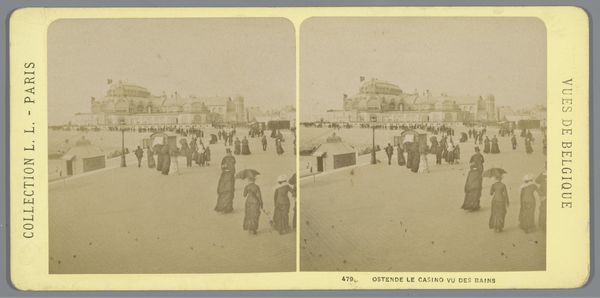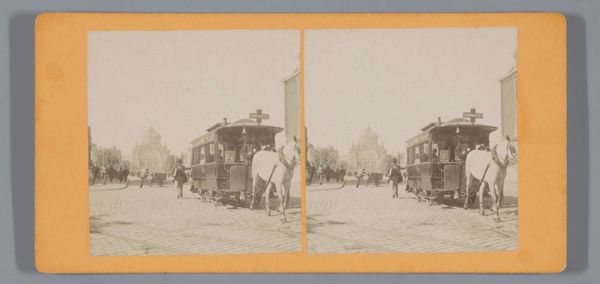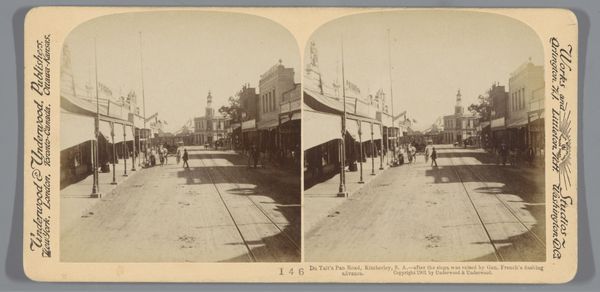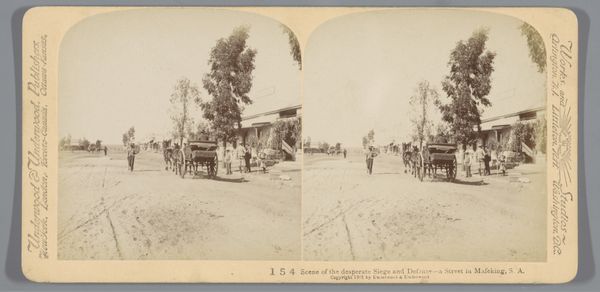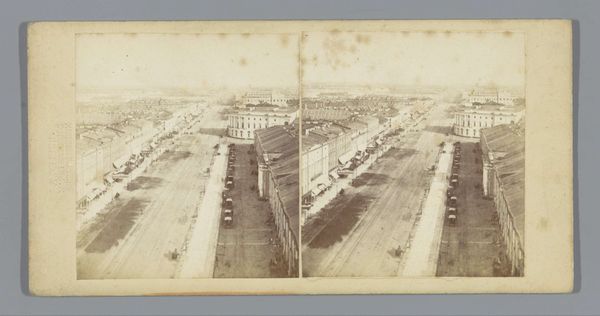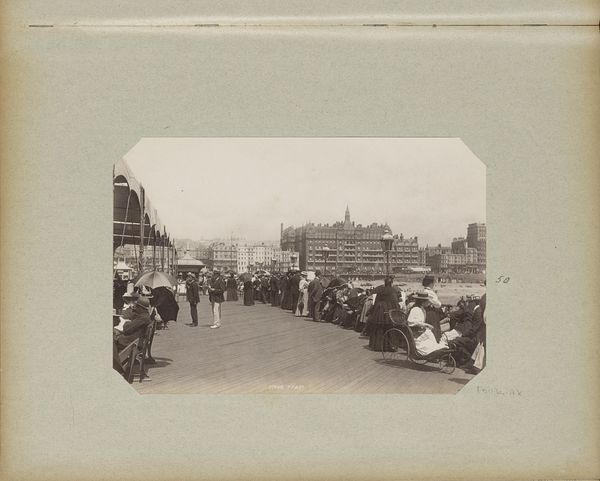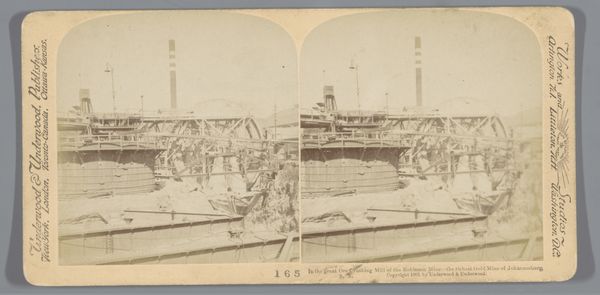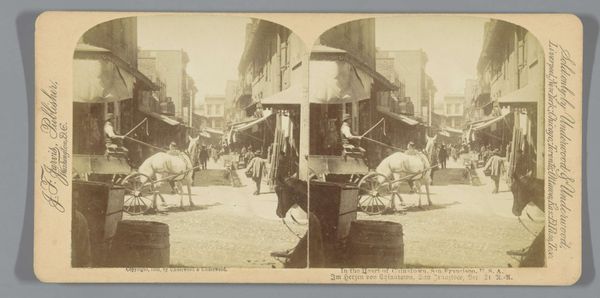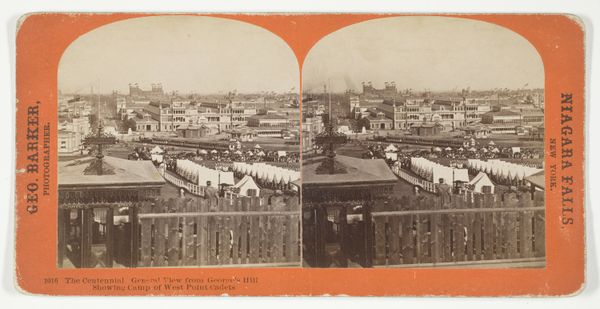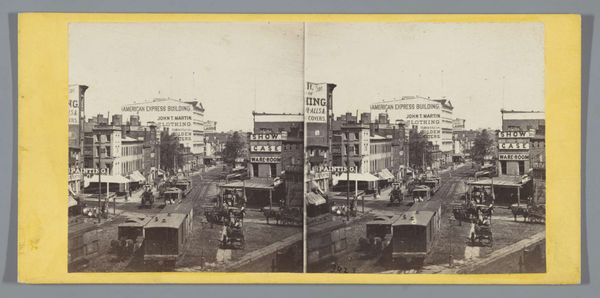
print, photography, gelatin-silver-print
# print
#
landscape
#
photography
#
orientalism
#
gelatin-silver-print
#
cityscape
#
post-impressionism
Dimensions: height 88 mm, width 178 mm
Copyright: Rijks Museum: Open Domain
Editor: Here we have "Gezicht op de kade in Kaapstad, Zuid-Afrika," or "View of the Quay in Cape Town, South Africa," a gelatin-silver print from around 1900. It's fascinating to see this bustling harbor scene captured in a stereo image. It feels very… staged. How should we be approaching this? Curator: Considering its materiality, this gelatin-silver print speaks volumes about the burgeoning photographic industry and its role in shaping perceptions of colonial spaces. We must acknowledge that photographs like these weren’t just capturing reality, but were actively constructing it. Think about the labour involved – from the photographers and publishers, to the dockworkers themselves. Editor: That's a great point about the labor involved. Were these images meant to be documentary or more… propagandistic, do you think? Curator: Probably a combination. On one level, the proliferation of these kinds of images served capitalist interests. Look at the mass of goods being moved, the ship itself; all elements contributing to, and reliant upon, industrial trade. Then think of the viewer, far removed, consuming this ‘exotic’ scene as a tangible item. How do they view it, this distance and how might their socio-economic background shape this relationship. Editor: So, we're talking about the consumption of an image as a form of commodity fetishism. Curator: Precisely. And even the choice of the gelatin-silver process itself contributes to this. It's relatively cheap and reproducible, allowing for mass dissemination of these scenes. Consider the environmental impact and waste during processing. This challenges traditional artistic boundaries and notions of uniqueness and craft. The commodification process transforms raw materials into vehicles for a message—what message are we truly selling here, beyond that of tourism, trade, colonialism itself? Editor: That's incredibly insightful! I had not considered it from this point of view. Focusing on materials, processes, labor helps us demystify the photograph. Curator: Exactly. Examining the materials allows a critical approach, and exposes the socio-economic structure within which these images circulate. We went far beyond aesthetics and narrative here.
Comments
No comments
Be the first to comment and join the conversation on the ultimate creative platform.


